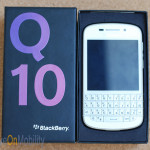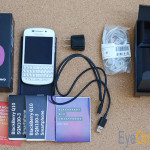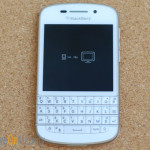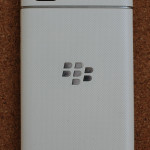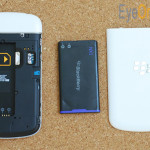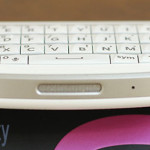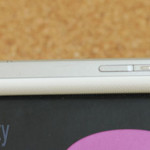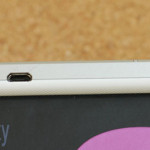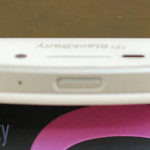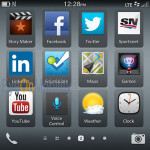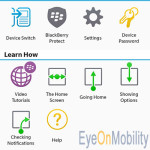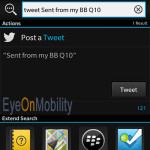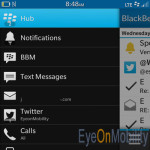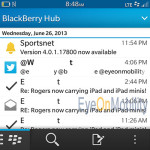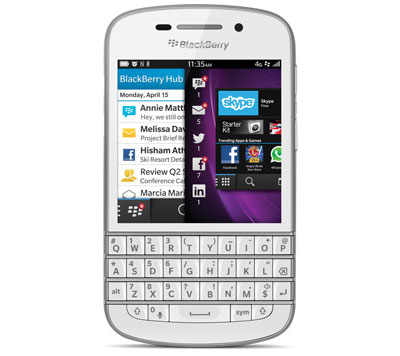 Introduction
Introduction
To say that it’s been a tough last few years for BlackBerry (formerly Research In Motion) would be quite the understatement. The company saw its dominant position in the smartphone market evaporate as customers flocked to Android and iOS devices. Once a market leader, pundits began to predict its demise or acquisition by a competitor. To turn its fortunes around, the company pinned its future on a completely new operating system, based on QNX, and a new CEO and management team. It finally unveiled its new operating system, BlackBerry 10 and two new devices, the BlackBerry Z10 and Q10, earlier this year.
Many BlackBerry diehards have eagerly been awaiting the Q10 in particular as it is the first BlackBerry 10 device to come with a physical QWERTY keyboard. It may not be a device for everyone but BlackBerry is not trying to make the Q10 a device for everyone – it is clearly aimed at business and enterprise customers where communications are still more important than watching YouTube videos and playing the latest games.
Our review was done with a white version of the BlackBerry Q10 on the Rogers Wireless network. The Rogers version of the Q10 supports the 2600MHz LTE band (Rogers LTE Max) providing faster network performance where available.
Specifications
Let’s kick things off with a look at the BlackBerry Q10’s specifications:
- Processor: 1.5GHz dual-core Qualcomm Snapdragon S4
- Operating system: BlackBerry 10
- Cellular connectivity: LTE
- Other connectivity: A-GPS/GLONASS, 802.11 a/b/g/n dual-band Wi-Fi, Bluetooth 4.0 LE, NFC
- Display: 3.1-inch 720×720 pixel (330PPI) Super AMOLED
- Input: Physical QWERTY keyboard and touchscreen
- RAM: 2GB
- Internal storage: 16GB onboard
- External storage: microSD cards up to 32GB
- Rear-facing camera: 8MP AF with BSI, f/2.2 aperture lens, flash, and 1080p video capture
- Front-facing camera: 2MP FF with 720p video capture
- Connectors: USB 2.0 port, micro-HDMI port
- Battery: Removable 2,100mAh
- Dimensions: 119.6 × 66.8 × 10.35 millimeters
- Weight: 139 grams
- Colors: Black, White
A closer look at the BlackBerry Q10
Used to devices with larger displays as I am now, the BlackBerry Q10 immediately felt small and compact in my hand. It harkens back to the days when our devices were much smaller than they are today. Made of a single piece of stainless steel with a removable glass-weave back panel treated with an oleophobic coating, it looks and feels refined. It also feels solid and well-built. In fact, it proved quite rigid when I tried to twist the frame. There were no creaks or groans and no give either.
The BlackBerry Q10 fits comfortably in your hand and will likely feel less awkward than many larger devices. The soft back with its ridged pattern help keep the device from slipping out of your hands. It was also nice to see a backing that did not immediately turn into a magnet for fingerprints.
The keyboard takes up nearly a half of the front of the device. The keyboard uses a four-row arrangement with each row separated by a brushed steel fret. These help separate the rows for easier typing. The rows are laid out in a straight fashion rather than the curved style found on older BlackBerry devices.
- Opened box
- Box contents
- Front
- Back
- Q10 opened up
- Speaker on bottom
- Left side
- Right side
- Top
Above it is a 3.1-inch touchscreen display, positively minuscule compared to some devices we are seeing these days. The display has a 1:1 aspect ratio with a resolution of 720 by 720 pixels (good for 330 pixels per inch). Above it is the speaker, notification LED and front-facing camera.
At the top of the device, you have the power/lock button as well as a 3.5mm audio jack and two noise cancellation microphones. On the right, you’ll find the volume rocker with a middle button that acts as a pause button and quick vibration mode toggle. On the right are the micro-USB and micro-HDMI connectors while the bottom has a microphone and a speaker.
There is not much on the back except a BlackBerry logo in the center and the 8MP camera with flash in the top left corner. The brushed metal accents found on the front and sides repeat themselves on the back where the back plate separates from the rest of the smartphone.
The micro-SIM and microSD cards are both located beneath the back panel by the battery.
All in all, the Q10 is a well designed and constructed device. Despite its compact package, BlackBerry did not compromise on the design and small touches like the volume rocker with its vibration toggle and the speaker being positioned on the bottom rather than the back are touches that speak of the thoughtful design.
The display
As mentioned earlier, the Q10 will not score any points for the size of its display. But the AMOLED display delivers a crisp image and holds up well under different viewing angles although colours tend to cool at higher angles. Contrast and brightness are both good. With its high PPI, text is sharp and easy to read even when small fonts are used. The display is even reasonable when used outside although it washes out completely in direct sunlight.
I found the touchscreen very responsive except for buttons in the top right corner. I don’t know if I wasn’t hitting them right or if there was some sort of sensitivity issue but I found myself having to more carefully press in that area than any other.
If there is a knock to be made against the display, it is the square shape, an odd choice in the mobile device world. While it is not an issue in most cases, it will be a bit of an annoyance when watching videos formatted in the more usual rectangular shape (eg, using a 16:9 aspect ratio).
The physical keyboard
The Q10’s physical keyboard is one of its key distinguishing features. As much as there is an adjustment when switching from a physical keyboard to a software one, going back is one as well. But if you used a BlackBerry keyboard in the past, it will come back to you pretty quickly. Even someone like me who was not an avid BlackBerry keyboard user, the adjustment was quick and effortless, quickly reminding me of why BlackBerry’s keyboards are so popular.
At the same time, BlackBerry has managed to further improve the keyboard. Keys are slightly larger than on the BlackBerry Bold 9900 and shaped so that you’ll instinctively know when your finger (or thumb) moves from one key to another.
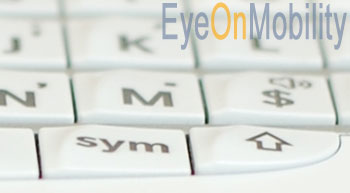
With BlackBerry 10, the keyboard has also been enhanced with better predictive capabilities. Unlike the Z10’s suggestions that float above the software keyboard, on the Q10, they pop up in a row at the bottom of the screen (and just above the keyboard) where they can be tapped. It’s not quite as efficient as the Z10’s method but the predictive capabilities are remarkably good. Surprisingly, it is disabled by default so you will need to go into the settings to turn it on.
Software keyboards have vastly improved in the last few years but there is still one area where the BlackBerry physical keyboard is superior. Getting to special characters is far easier. I would also not have been surprised to find that my overall typing speed would have continued to improve had I been able to continue using it beyond our review period.
In the end, as much as the BlackBerry Q10’s physical keyboard is impressive, software keyboards have made significant improvements over the years and most may find that the better ones (such as Android’s SwiftKey) are nearly as good. For many, the physical keyboard may no longer be the selling feature it was in years past.
The Camera
The BlackBerry Q10 comes with the same 8MP camera as the BlackBerry Z10. Since the launch of the latter device, BlackBerry has updated the software and addressed many of the issues initially reported with the Z10. While it cannot compete with some of the higher end smartphone cameras out there, it is nonetheless a pretty impressive camera. It performed well when there is a decent amount of light and performed better than I expected at dusk and at night, the latter with night mode.
- Indoors
- Outdoors on a sunny day
- At dusk
- At dusk with HDR
- At night
- At night with HDR
The camera is set to shoot in a 1:1 ratio by default but you can change that to 4:3 or 16:9 within its settings. If you do, you’ll end up with black bars though. It’s not a huge issue but it can detract from some pictures.
BlackBerry 10.1 which comes pre-installed on the Q10 also introduced an HDR mode. It also includes a fair selection of editing features such as cropping and a variety of filters. And one nifty feature is Time Shift. It essentially captures a series of images and lets you then scroll through them to select the best shot. It definitely helps in those times when there always seems to be someone blinking in your group shot!
Much like the camera, quality of videos shot with the BlackBerry Q10 is not on par with some higher-end devices but still more than adequate. Here are two samples, one on a beautiful sunny day and the other at night:
BlackBerry 10
The purpose of this review is not to delve deeply into BlackBerry 10 itself but I would be remiss not to touch upon this aspect given that it is another one of the Q10’s key features.
- App menu
- Reminder
- On-device tutorials and help
As you would expect when switching operating systems, there is a bit of learning curve in getting used to BlackBerry 10. Because it is gesture driven, some of the buttons that we have gotten used to don’t exist here. For example, there is no Home button; instead, there is a Home gesture. Unfortunately, this gesture that I used quite a bit is also a bit finicky. It’s a swipe up but you actually need to start it below the screen. Until I taught myself to start it from the top fret, it proved to be a source of annoyance.
Aside from this one particular motion, I found the gesture-based controls to be quite effective. It’s easy to get to the Hub or see which apps are running before diving into your app catalog with just another swipe.
Rather than an in-depth look at the operating system, let me highlight a few features that I really liked:
Quick Actions
Building on its universal search capabilities, Quick Actions allow you to, as the name implies, quickly perform certain things. For example, if I want to tweet something, I simply type “tweet” and my message and off goes my tweet. This also works with emails and other types of actions. The biggest challenge a user may have is simply to learn what these are but once you get used to them, they are extremely handy to have.
- Quick Actions
- Universal Search
BlackBerry Link
Installed on your computer, this software provides an easy to set up your new BlackBerry 10 and transfer content such as music, pictures and documents over from an older BlackBerry device. It also proves quite handy to manage content migration and synchronization to and from your computer. While there are other ways to do this, BlackBerry Link is a simple and intuitive tool to simplify what is often a tedious task.
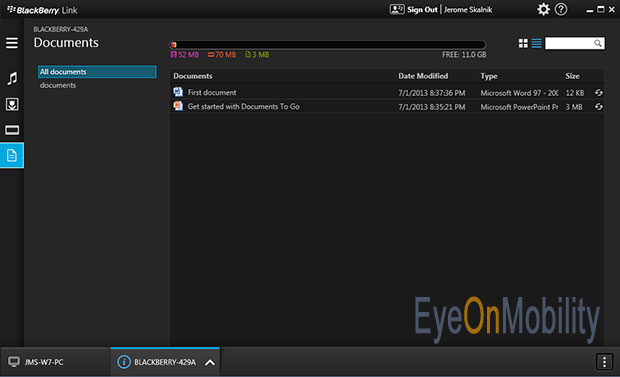
There are also a few things that I found less than ideal in BlackBerry 10:
App Ecosystem
As has been said so often, one of BlackBerry’s challenges is to build up its app ecosystem. A number of top apps (eg, Netflix) are still unavailable for BlackBerry 10 devices (or simply for the Q10 as developers retool given the different resolution from the Z10). Users are left with a void or forced to look for alternatives that don’t necessarily deliver exactly what they’re looking for. Hopefully time will help BlackBerry address this but time is not exactly it’s best friend right now.
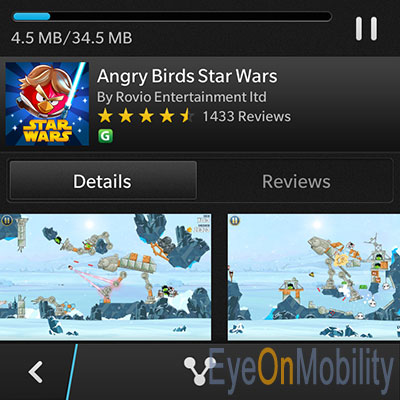
BlackBerry Hub
BlackBerry Hub itself should not be in this list. It is a useful tool that keeps you aware of all your communications with one simple gesture. Unless you use Quick Actions though, the Hub still forces you to switch over to the relevant app when you want to respond. Hopefully, BlackBerry can smooth this over in a future release.
- BlackBerry 10 Hub
- BlackBerry 10 Hub – More details
All in all, BlackBerry has delivered a very solid operating system in BlackBerry 10 and one that should not be overlooked. While it has its quirks and peculiarities, the same can be said of any other operating system. But BlackBerry 10 lacks a certain something that would set it above its competition and allow it to shine brighter. It is as good as Android or iOS but it is not miles ahead and that may be its downfall. In the end, there is little in BlackBerry 10 that will likely sway users away from an operating system that they know far more intimately and in which they likely have invested a fair amount of money in apps.
Performance
With its 1.5GHz dual-core processor and 2GB of RAM, BlackBerry 10.1 proved to be peppy with little to no lag in scrolling and switching apps. When a few other apps were already running, opening a new app seemed to take a second or two more than you would expect. It was never a long pause, just an impression that a similar app would open much faster on a device with a faster processor.
The SunSpider JavaScript benchmark came in at 1,470, a bit higher than I expected butcertainly not as good as we have seen from more powerful devices. Nonetheless, BlackBerry 10 performed well overall.
Boot times are another matter. It easily took about a minute for the Q10 to start up. Fortunately, we don’t often reboot our phones but if you do, you will find yourself tapping your fingers quickly.
For those of us who still use our smartphones to make calls, the BlackBerry Q10’s call quality was good. I never experienced any dropped a call or signal issues in areas where I expected to have decent coverage. Callers came through clearly and loudly and none reported any issues understanding me on their end either (although that’s more a function of their device than the Q10).
When it comes to speakerphone calls, BlackBerry’s decision to put the speaker on the bottom rather than the back of the device pays huge dividends. Playing any kind of audio (music for example) also benefits from the placement and the fact that the speaker is of good quality as far as mono speakers go.
Where the Rogers LTE network was available, speeds were consistently above 20Mbps. Browser pages loaded quickly on the much improved browser that comes with BlackBerry 10.
Battery
The BlackBerry Q10 comes with a removable 2,100mAh battery that should get you through at least one day. Even using it as a hotspot for an hour, I found that I was able to get through the day with moderate to heavier use. The smaller display may have much to do with this but BlackBerry also focused on this aspect with the operating system itself.
Moderate use involved mostly checking emails, a few calls, instant messaging including BBM and text messages, checking Facebook, a bit of game play, and a bit of social media (Twitter, Facebook, etc). Heavier use involved some video watching via YouTube and more frequent overall usage.
The fact that the battery is removable also gives real power users the ability to rely on a second battery when needed.
Pros
- Impressive physical QWERTY keyboard
- Solid construction
- Good battery life
Cons
- 1:1 display
- Expensive (CA$699.99 outright)
- App catalog still needs some key apps
Conclusions
While visiting some friends during the review period, I was asked what I thought of BlackBerry 10 and the Q10. My answer was that it was a nice operating system and that it was a credible alternative to Android and iOS, the current market leaders. But it lacked a “wow factor” that would allow it to distinguish itself from its competition. I don’t quite know what that “wow” should be but it would be something that would help convince a prospective user that it’s worth abandoning an operating system in which they have likely made substantial time and monetary investment. I was more impressed with the device itself and especially its physical keyboard.
BlackBerry knows that there is a segment of the smartphone market that still wants a physical keyboard. The BlackBerry Q10 answers the call of that audience. It takes the new operating system and delivers it in a neat package that will appeal to those who still value the ability to respond quickly and accurately over other features such as games or watching video content. But for those who have moved on and gotten used to software keyboards and larger displays, the Q10 is unlikely to be their device of choice.

